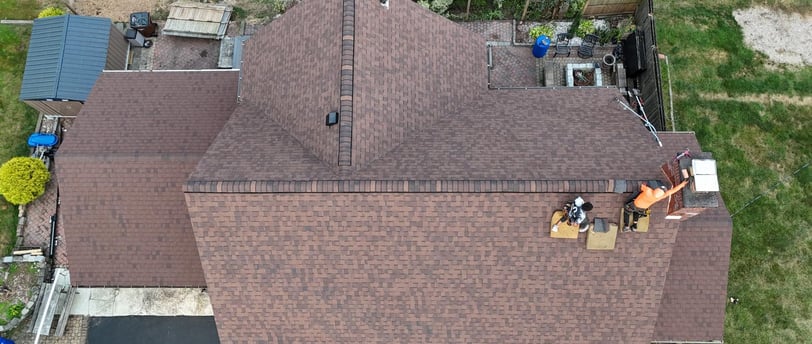Most Common Types of Roof Damage
Get informed on the most common types of roof damage and what they mean for your property.
ROOFINGHOMEOWNERPROPERTY STORM DAMAGEINSURANCE CLAIM
Rejoice & Restore
11/23/20243 min read


The Most Common Types of Roof Damage and Storm Damage: What Homeowners Need to Know
Your roof is one of the most critical components of your home, acting as a shield against the elements and protecting your family and possessions. However, roofs are vulnerable to damage over time, especially during storms. Identifying common types of roof damage and understanding their associated risks can help you protect your home and make informed decisions about necessary repairs.
1. Common Types of Roof Damage
a. Missing or Damaged Shingles
Shingles are often the first line of defense for your roof. Over time, they can become loose, cracked, or blown away due to strong winds or hailstorms. Missing or damaged shingles expose the underlying roof structure to the elements, increasing the risk of leaks and water damage.
Risks:
• Water infiltration leading to mold and mildew.
• Weakened roof structure over time.
b. Leaks
Roof leaks are one of the most common issues homeowners face. They can occur due to improper sealing, missing shingles, or punctures caused by falling debris. Even a small leak can lead to significant problems if left unaddressed.
Risks:
• Water damage to ceilings, walls, and insulation.
• Growth of harmful mold and mildew.
• Structural damage to the home.
c. Flashing Damage
Flashing is a thin material installed around vents, chimneys, and roof valleys to direct water away from critical areas. High winds and storms can loosen or damage flashing, leaving your roof vulnerable to leaks.
Risks:
• Increased risk of water intrusion.
• Accelerated roof deterioration around vulnerable areas.
d. Hail Damage
Hailstorms can cause significant damage to roofing materials, especially asphalt shingles. Hail impacts may create small punctures, dents, or cracks, compromising the roof’s ability to protect your home.
Risks:
• Weakened roofing material.
• Long-term structural damage if not repaired promptly.
e. Tree Damage
Falling branches or entire trees during storms can cause extensive damage to your roof. Even small branches can puncture shingles, while larger branches may cause severe structural damage.
Risks:
• Immediate structural damage requiring emergency repairs.
• Exposure of your home’s interior to the elements.
f. Gutter Damage
Gutters play an essential role in directing water away from your roof and home. During storms, debris like leaves and branches can clog gutters, while high winds may cause gutters to detach.
Risks:
• Water pooling on the roof, increasing the risk of leaks.
• Foundation damage due to improper water drainage.
g. Vent and Skylight Damage
Skylights and roof vents are common features that may become damaged during severe weather. Cracks, broken seals, or dislodged components can allow water to seep in.
Risks:
• Increased likelihood of roof leaks.
• Higher energy costs due to loss of insulation efficiency.
2. Associated Risks of Ignoring Roof Damage
Ignoring roof damage can lead to several long-term risks:
• Structural Damage: Water infiltration can weaken the structural integrity of your roof and home over time.
• Mold and Mildew Growth: Persistent leaks create the ideal environment for mold, which can pose health risks.
• Increased Repair Costs: Minor damage left unaddressed often escalates into costly repairs or even roof replacement.
• Decreased Property Value: A damaged roof can reduce the resale value of your home and deter potential buyers.
3. How Storms Impact Roofs
Storms can exacerbate existing damage or create new issues. High winds can rip off shingles, hail can cause dents and cracks, and heavy rain can lead to water infiltration. Even if your roof appears intact after a storm, hidden damage may exist. A professional inspection is crucial to identify and address these issues early.
4. Preventive Measures
While storms are unavoidable, there are steps you can take to minimize roof damage:
• Schedule regular roof inspections, especially after severe weather.
• Keep your gutters clean and free of debris.
• Trim overhanging branches near your roof.
• Address minor repairs promptly to prevent them from worsening.
Summary and Final Advice
Roof damage, whether caused by wear and tear or severe weather, poses significant risks to your home and safety. From missing shingles and leaks to tree damage and hail impacts, understanding the common types of roof damage can help you take proactive steps to protect your home. However, diagnosing and addressing roof issues often requires expertise.
If you suspect roof damage or want peace of mind after a storm, contact a local trusted roofing professional for an in-person inspection. They can provide an accurate assessment of your roof’s condition and recommend the best course of action. By addressing roof damage promptly, you can safeguard your home, save on costly repairs, and ensure the long-term integrity of your roof.
Rejoice & Restore
Expert roofing and solar solutions for Connecticut.
contact@rejoicerestore.com
© 2024. All rights reserved.
Privacy Policy | Terms of Use




